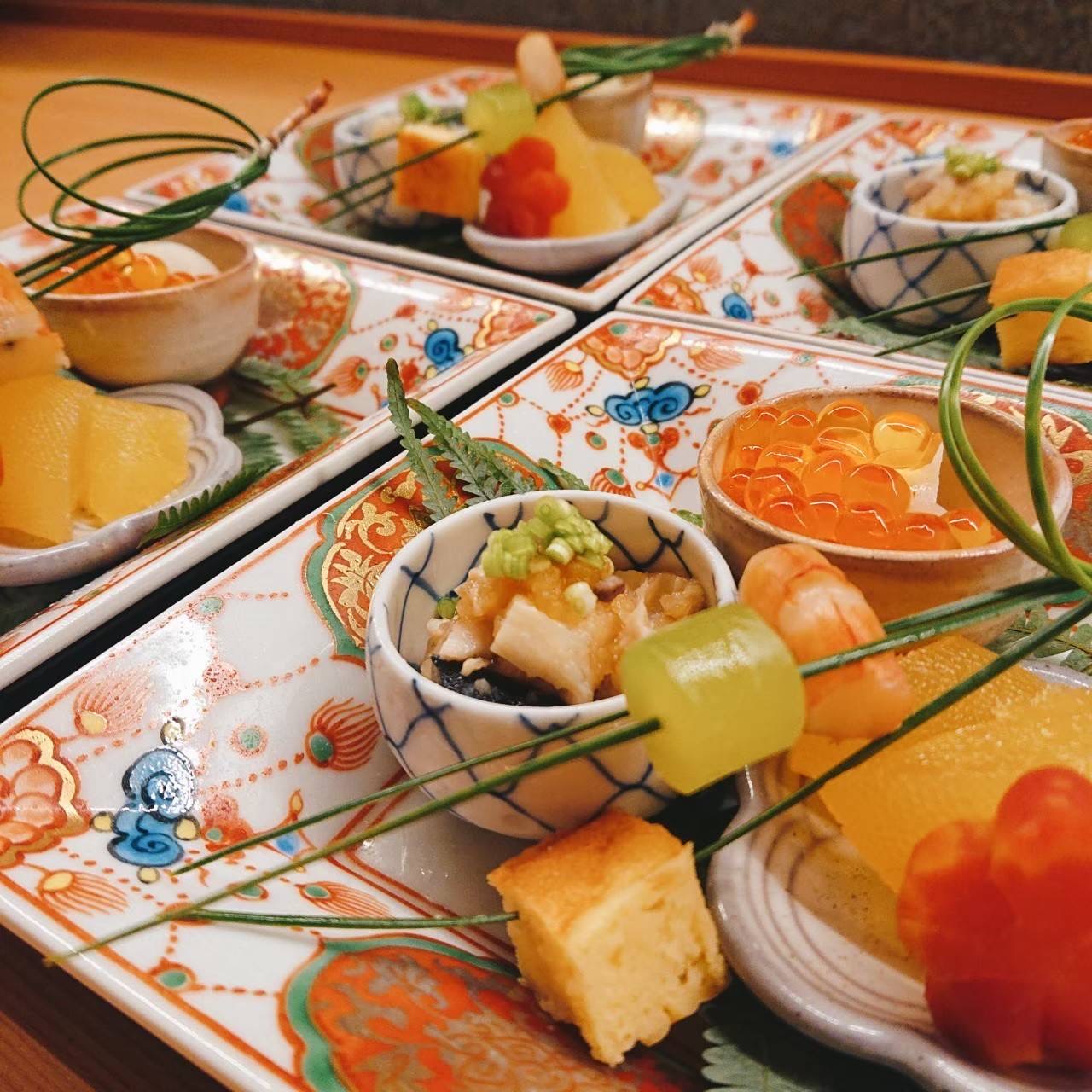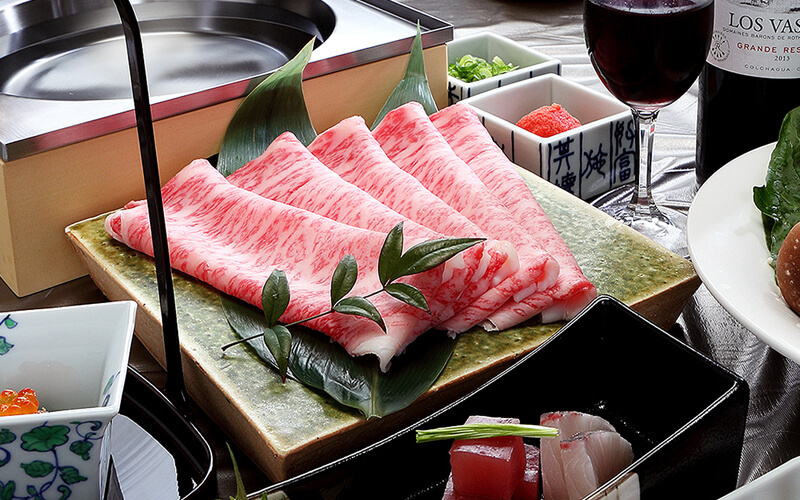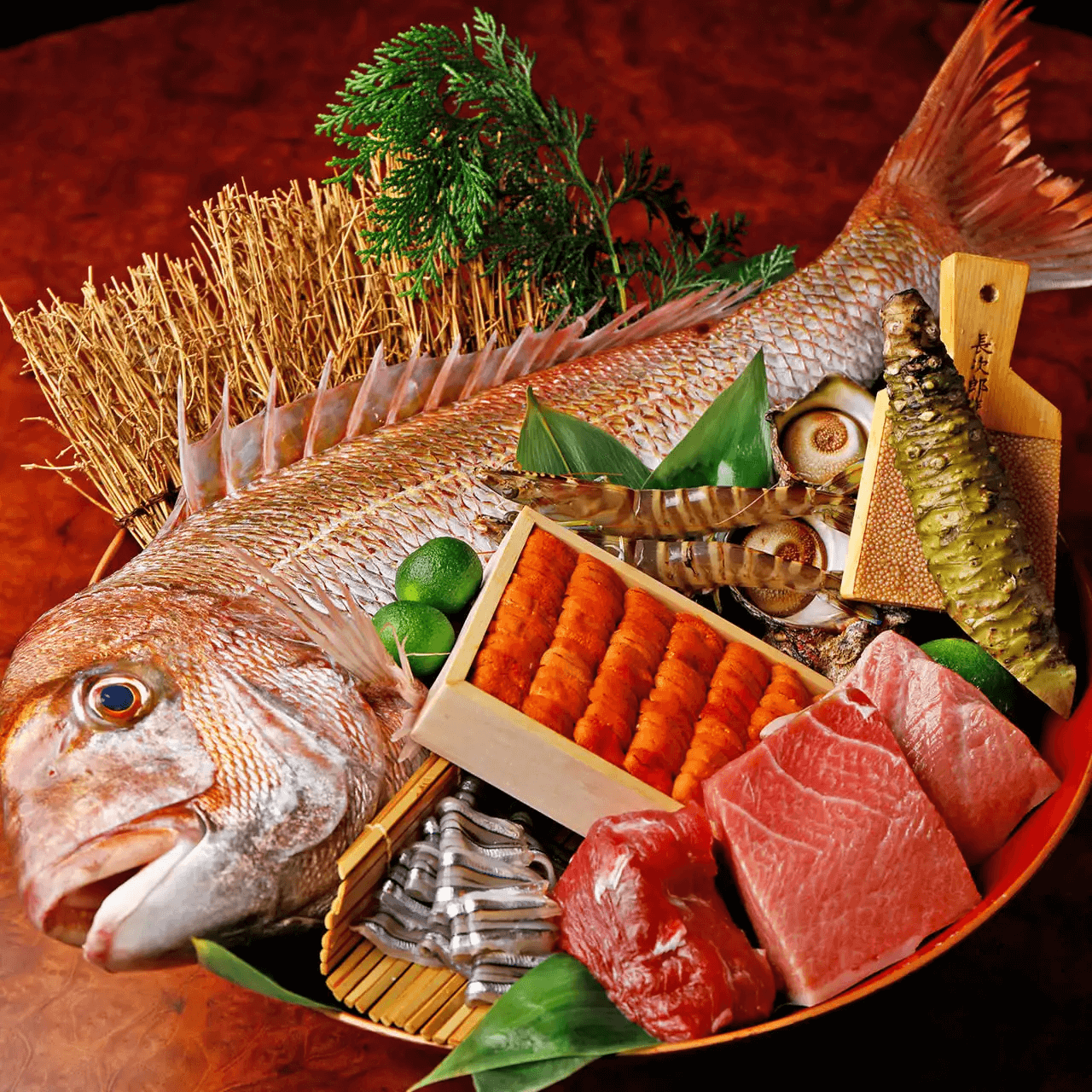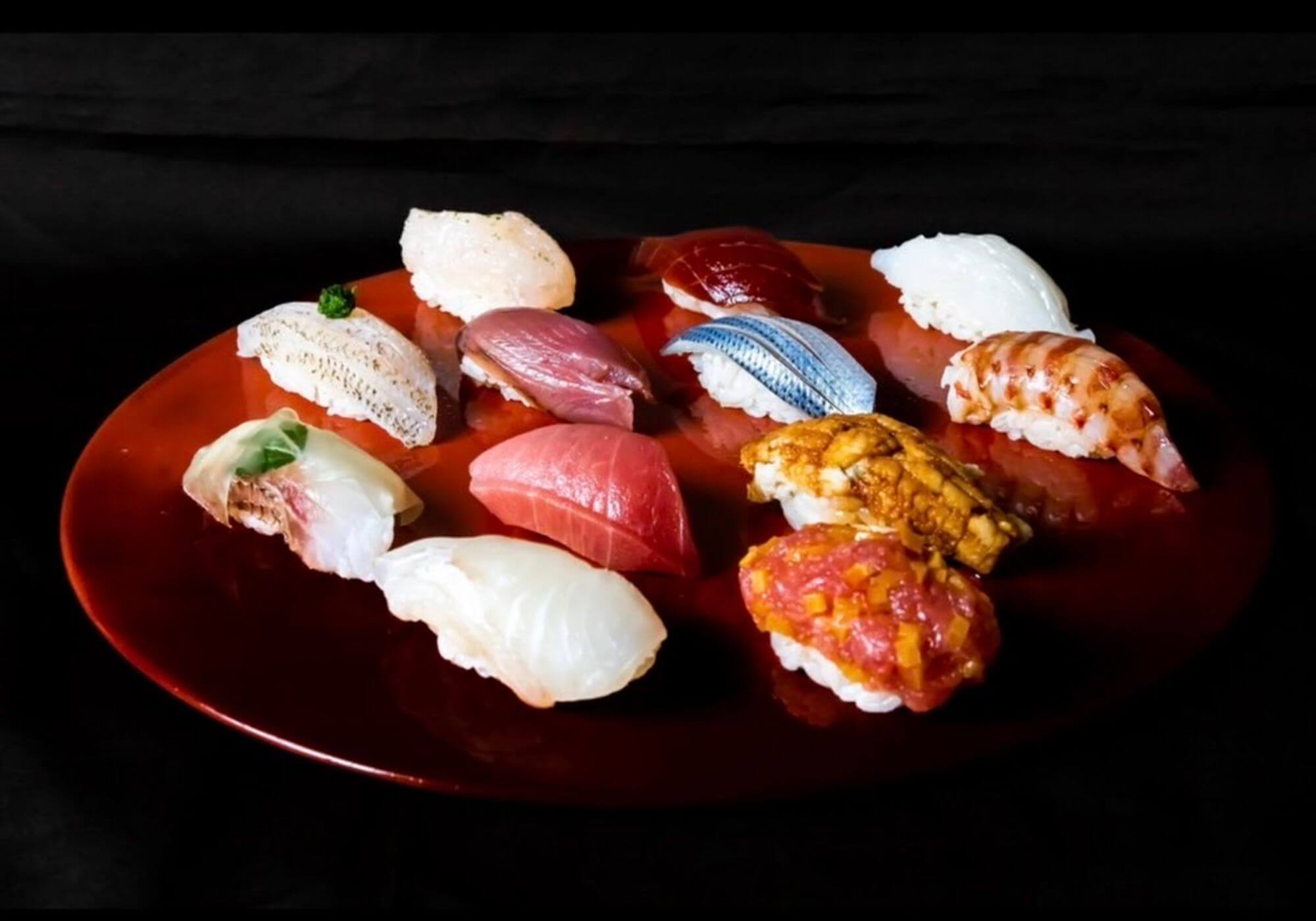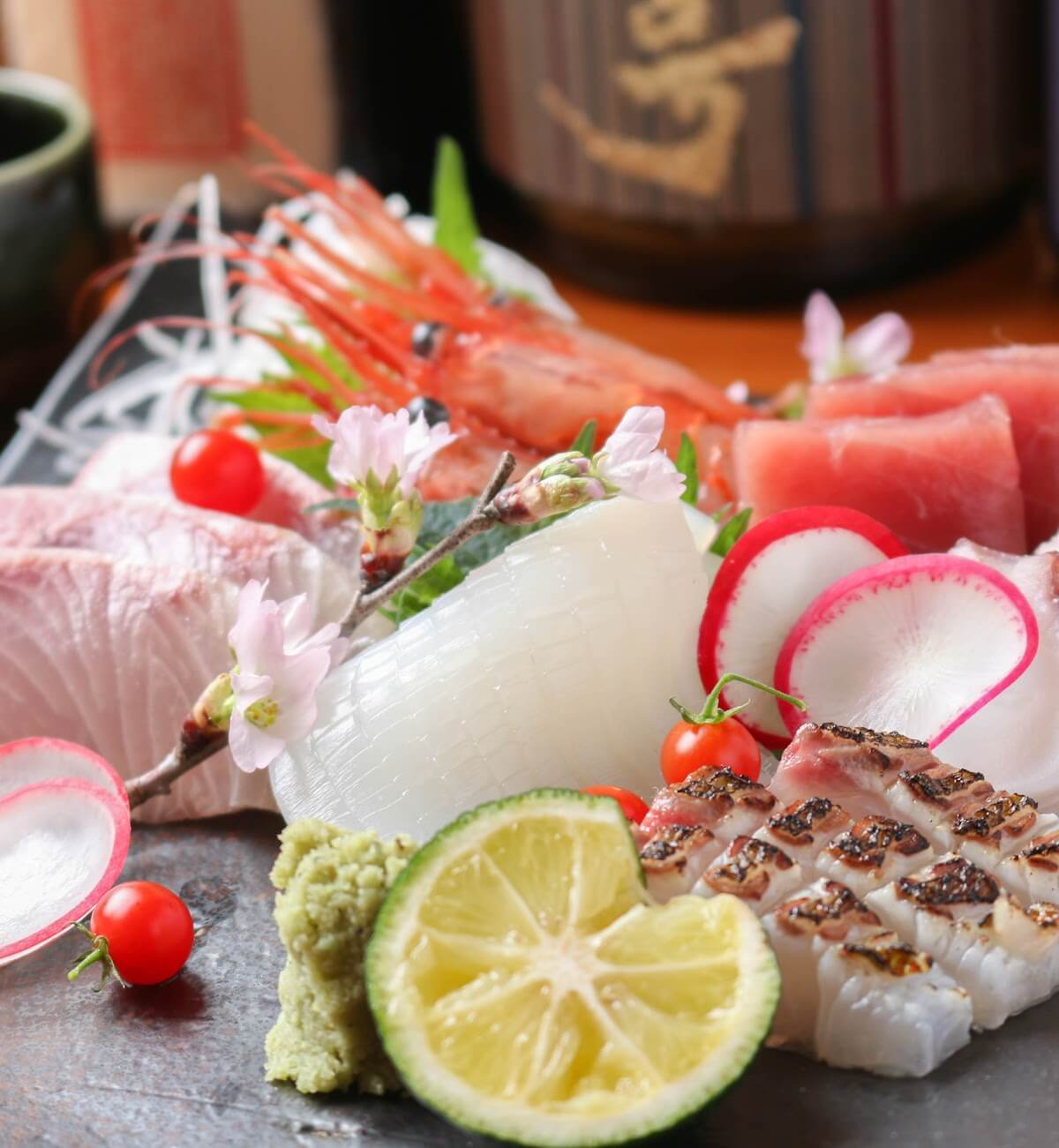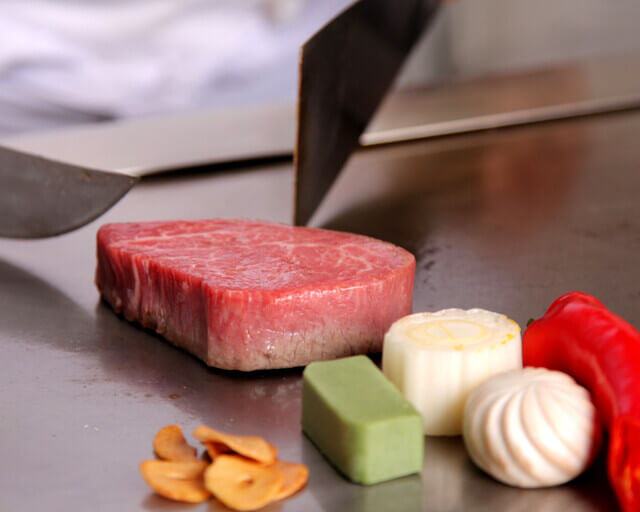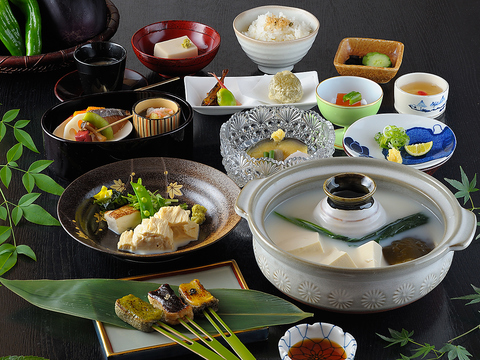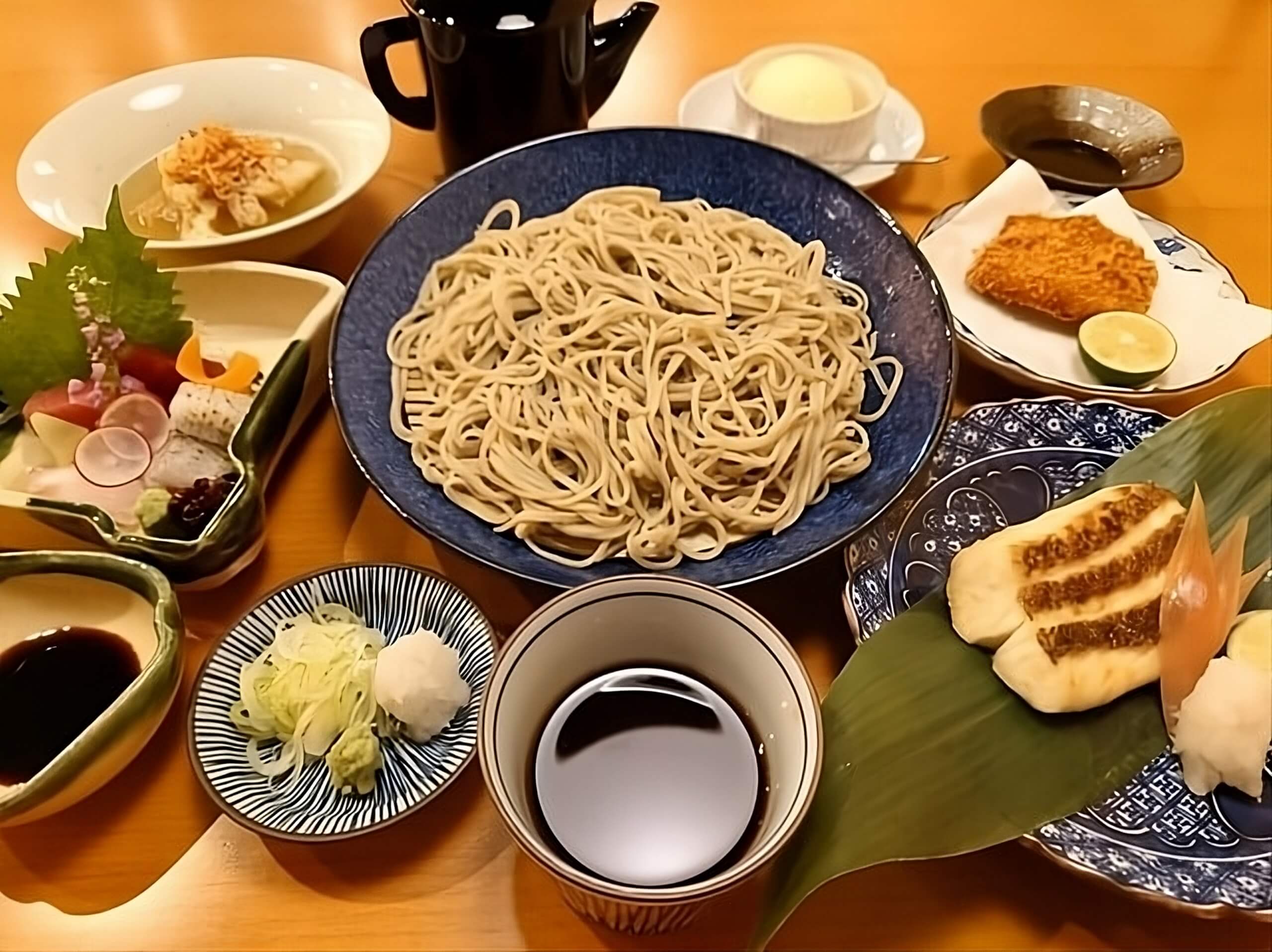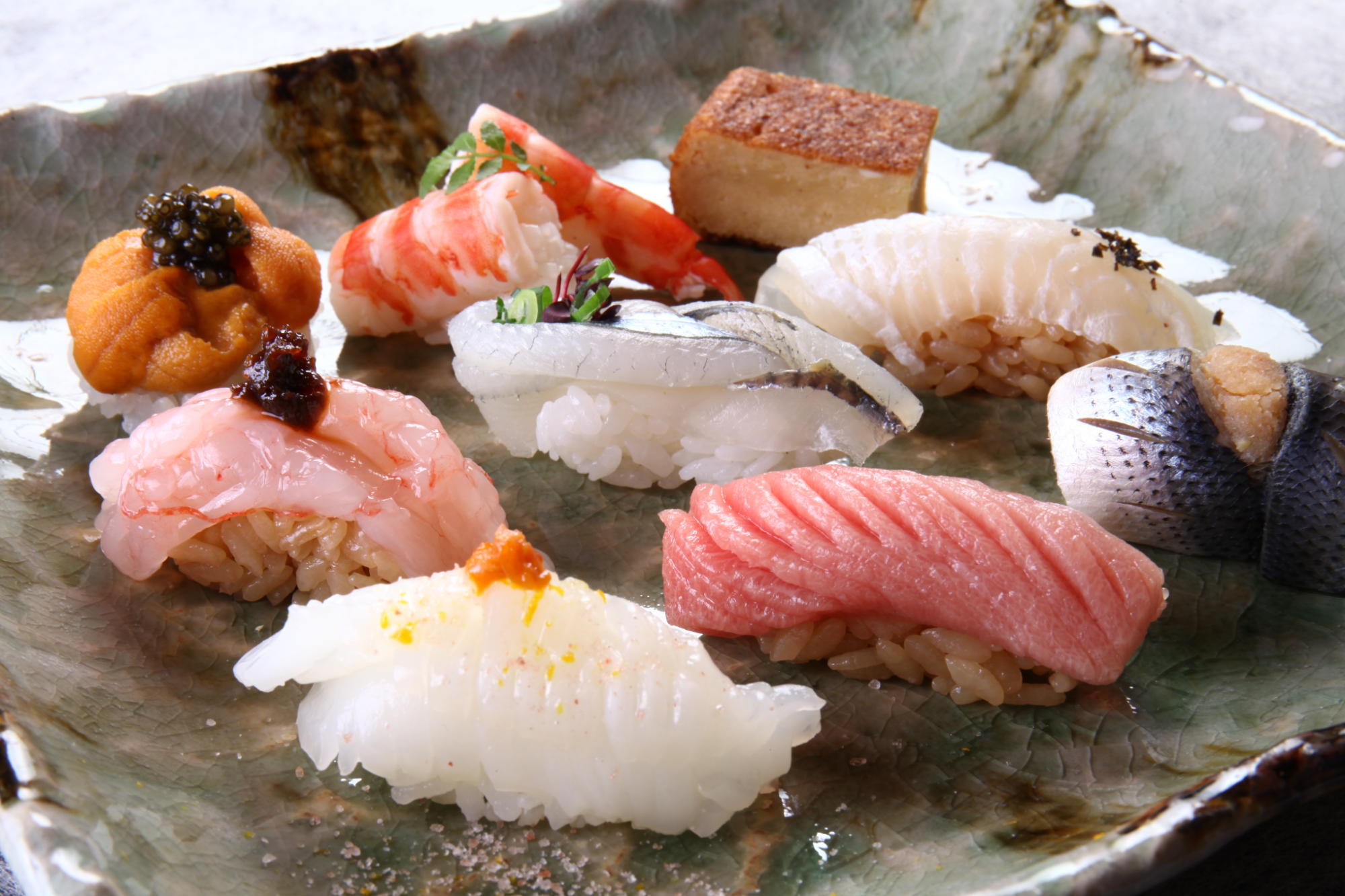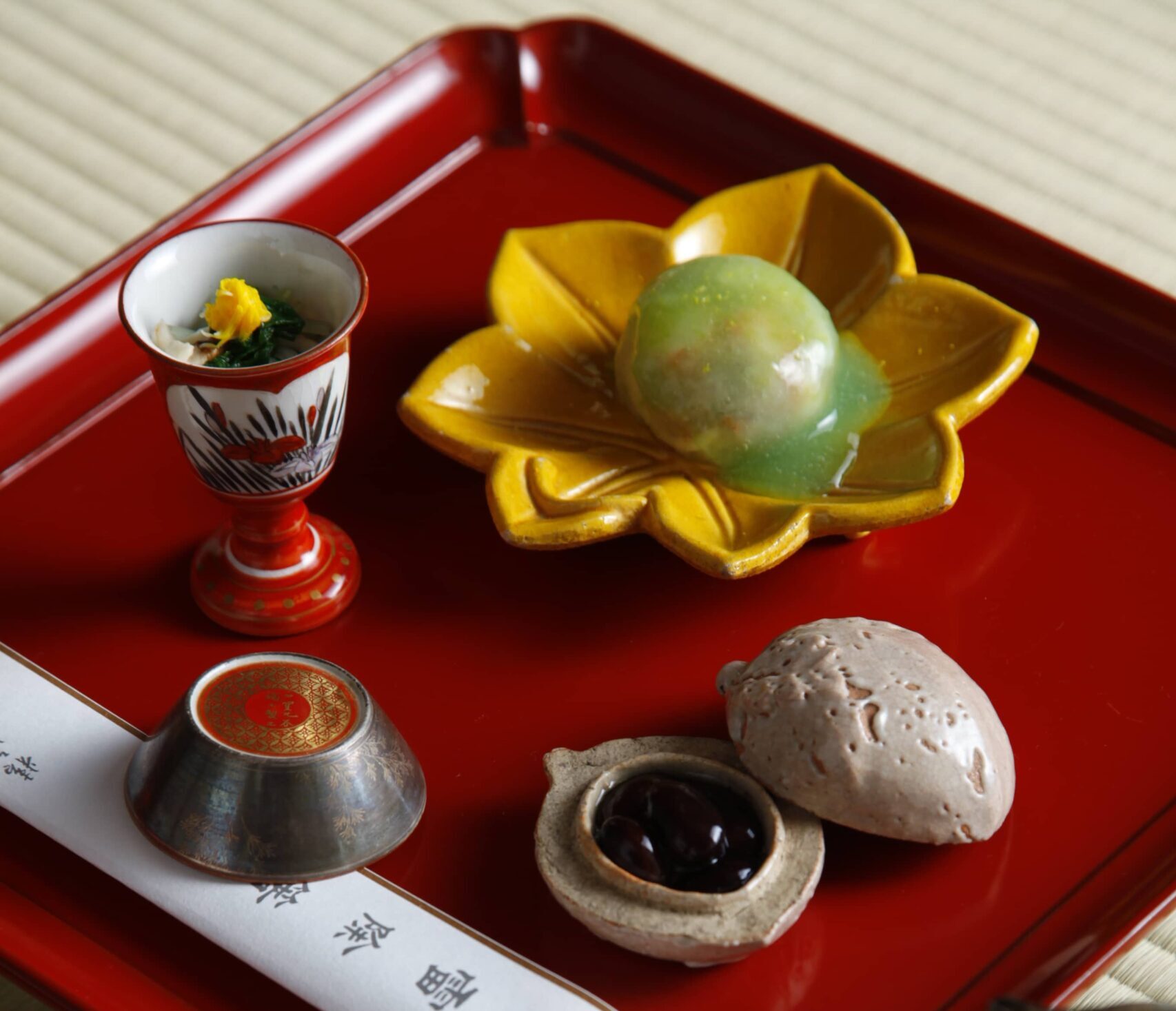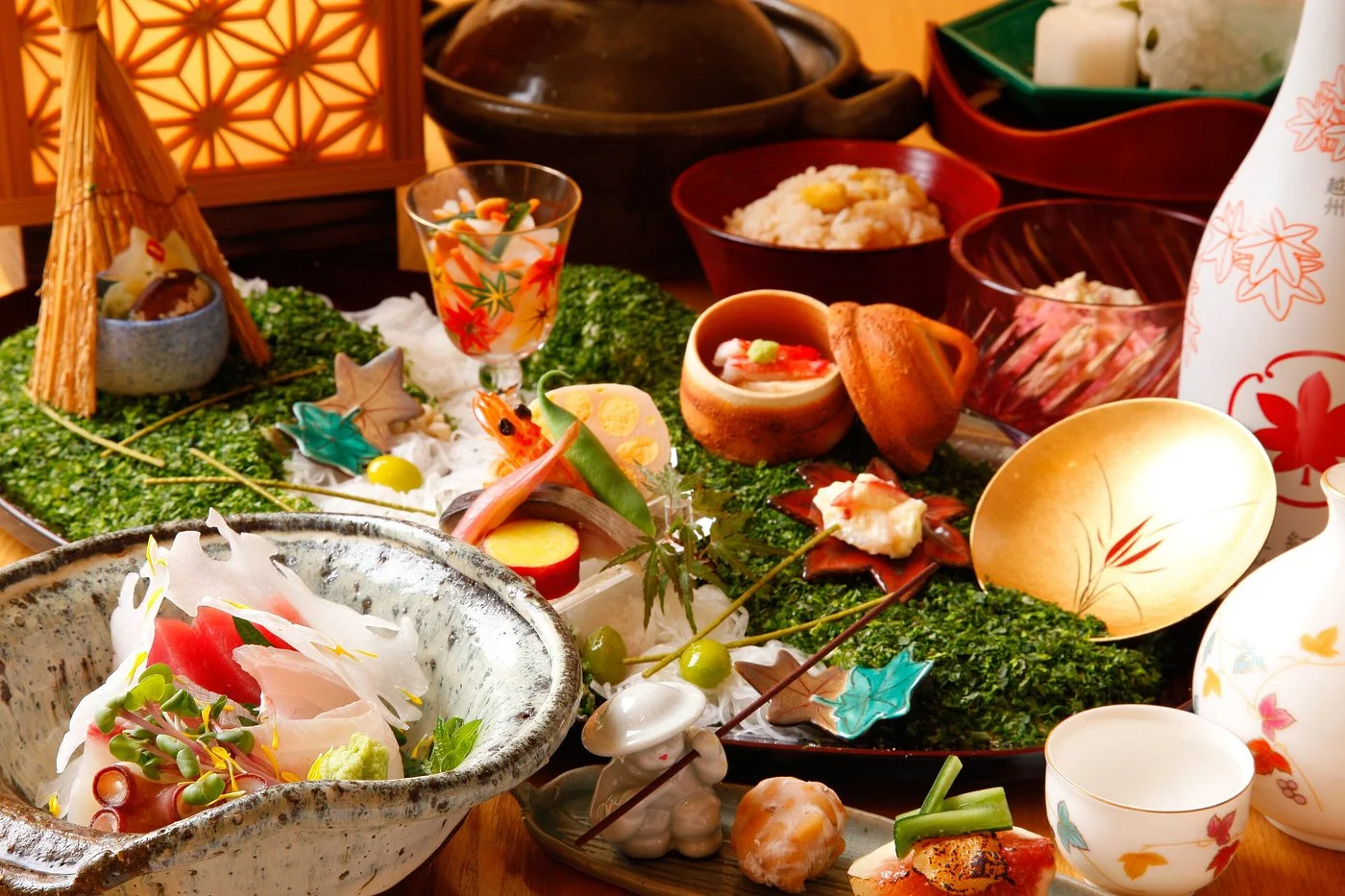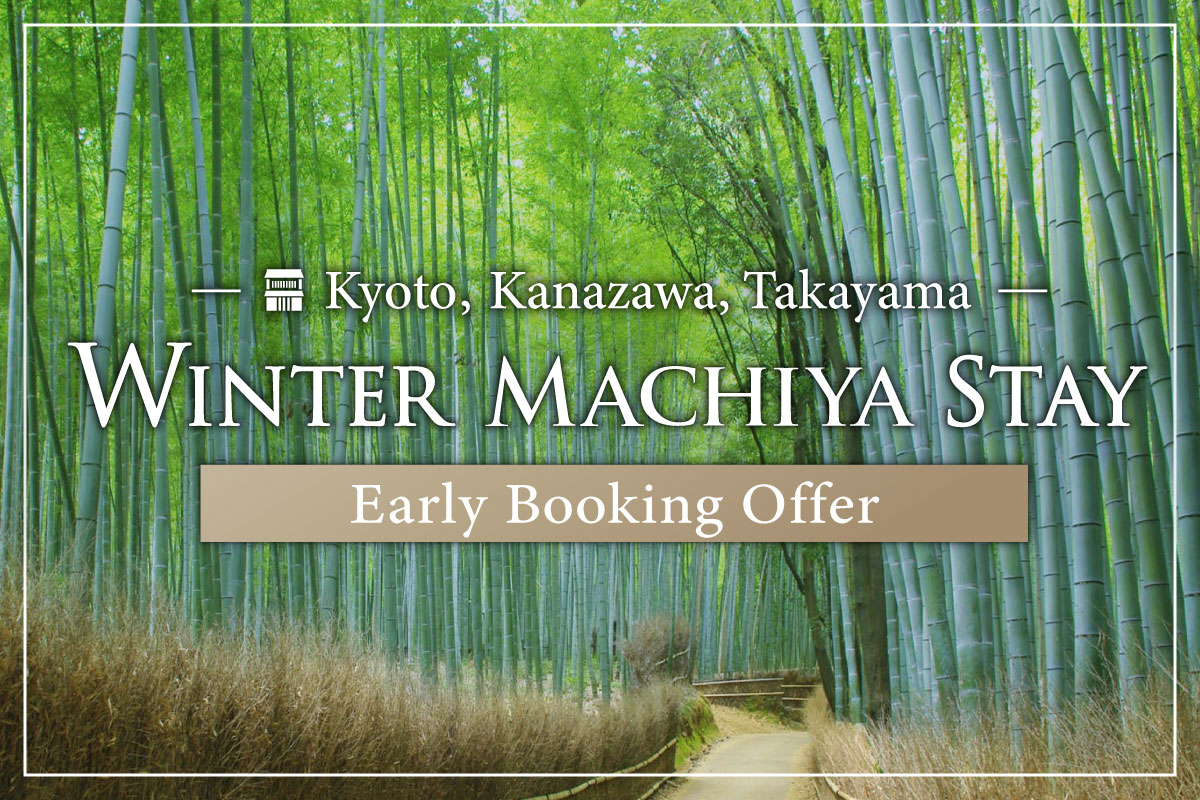Many people are familiar with tofu, but have you heard of yuba? Yuba (pronounced “you-bah”), often called “tofu skin,” is a delicious, natural byproduct of the tofu-making process. This delicate ingredient is both vegetarian and vegan, naturally gluten-free, and offers a healthy source of plant-based protein. And if you’re looking for the best place to try it, look no further than Kyoto City, Japan!
In this article, we’ll explain what yuba is, explore its history, discover how it’s used in Japanese cuisine, and share our local recommendations for the best restaurants where you can enjoy authentic yuba and tofu.

The main difference between yuba and tofu lies in how they’re made. Both start with soybeans, which are soaked in water, ground, and then strained to create soy milk.
To make tofu, the soy milk is set using nigari (magnesium chloride), a natural coagulant derived from seawater. This causes the soy milk to gently solidify, separating into curds and whey—similar to the cheese-making process with dairy milk. The curds are then drained from the whey and pressed into blocks to form tofu.
Yuba, on the other hand, takes a completely different approach. Instead of using a coagulant, the soy milk is gently heated until a delicate film of solidified soy proteins forms on the surface. This film is carefully lifted off and drained to create yuba. That’s all there is to it!
There are many different theories about how and when yuba (tofu skin) was introduced to Japan. While precise details remain uncertain, most scholars agree that the technique came from China through Buddhist monks, who valued it as a vital vegetarian source of protein.
One popular theory suggests that Saichō, the founder of Enryakuji Temple in Kyoto, learned how to make tofu and yuba while studying Buddhism in Tang China over 1,200 years ago. Upon his return to Japan, he brought these traditions with him, laying the foundation for what would become Japan’s temple cuisine.

Another theory credits the Chinese monk Ganjin (Jianzhen), who arrived in Japan in the late 8th century. Along with Buddhist teachings, he is believed to have introduced soy-based foods like tofu and yuba, which quickly became central to vegetarian monastic cooking.
As these traditions took root, Kyoto developed its own distinctive variety known as 京湯葉 (Kyo-yuba), which became an integral part of the city’s longstanding shojin ryori (Buddhist vegetarian cuisine) and kaiseki ryori (multi-course haute cuisine) traditions.
During Kyoto’s centuries as Japan’s imperial capital (794–1868), the city flourished as a center of refined culinary culture, with yuba emerging as one of its signature ingredients. Kyoto’s pristine water and rich temple culture provided the perfect environment for Kyo-yuba to thrive. Meanwhile, similar yuba delicacies arose in other regions, such as Nikko, each reflecting local tastes and traditions!

Nama yuba sashimi is prepared by gently lifting thin, silky sheets of fresh yuba and layering them together like a mille-feuille. The layered yuba is then cut into bite-sized pieces and served in the style of sashimi.
It is often enjoyed with soy sauce and wasabi, or lightly dipped in a refreshing citrus-based ponzu. Because it is unprocessed and freshly made, nama yuba offers a rich yet subtle taste of soybeans, with a smooth and delicate texture that melts on the palate. This simple preparation allows the natural, refined flavor of soy to shine through, creating a pure and understated dining experience.

‘Age’ in Japanese refers to deep-fried food, so age yuba is deep-fried yuba! The texture is similar to puff pastry, surprisingly light and flakey. Thicker yuba sheets may retain a tender, softer interior after frying, while thinner sheets become crunchy throughout.
Age yuba can be enjoyed on its own as a savory snack or appetizer. It is also commonly simmered gently in dashi broth to make a flavorful side dish. Additionally, age yuba can be wrapped around various fillings such as rice, red bean paste, vegetables, or meat, creating versatile wraps or rolls used in different Japanese dishes.
Another popular yuba dish is ‘yuba steak’! Thickly layered yuba is grilled on a hot plate until golden and crisp.
It can be served in various ways: with dashi sauce, vegetables, or alongside rice or noodles. Some restaurants add their own unique twists, making the dish highly versatile. It’s a great option for vegetarians and vegans who are in the mood for something protein-rich and filling.
However, it’s important to note that some Japanese recipes may use dashi made with fish stock, so vegetarians and vegans should check the broth ingredients to ensure it aligns with their dietary preferences.
What makes a dining experience special on a trip is knowing that you can’t have it anywhere else. The Kyoto restaurants we recommend below are local favorites, not just for their food but their focus on regional culinary traditions as well as ingredients that are locally sourced or made in-house.
Below are a few of our yuba restaurant and yuba kaiseki dinner dinner recommendations that allows you to enjoy this delicacy in a variety of different ways:
Founded in 1818, Sakuraiya has literally been around since the late Edo period (1600-1868). Their 10-course tofu and yuba kaiseki dinner is only 5,500 yen (about $36 USD) per person and includes a variety of dishes that use locally made tofu and seasonal local vegetables.
Each course of the tofu and yuba kaiseki dinner features different cooking styles and flavors, such as takiawase (simmered tofu and vegetables), yuba sashimi, yakimono (a grilled dish), Japanese pickles, and a dessert.
・Hours: 5pm – 8pm
・Closed: Wednesdays (weekly), Tuesday (once per month)
・Address: 885 Bakurocho, Kamigyo Ward, Kyoto
・Reservations: Required
Hours: 5pm – 9:30pm
Address: 233-4 Daimonjicho, Nakagyo-ku, Kyoto
Reservations: Required
If you have any allergies or food aversions, please let the restaurant know ahead of time.
・Specialty – Kumiage Fresh Yuba
・Main Dish of the Day
・Fresh Yuba Sashimi
・Yuba Steak – yuba is grilled right before your eyes on a ceramic plate, and accented with butter.
・Yuba Salad
・Yuba Hot Pot – fresh yuba is simmered in a hot pot & enjoyed with a special ponzu citrus sauce.
・Yuba Rice Porridge
・Simmered Yuba Tsukudani
・Soup
・Soy Milk Pudding
One of the advantages of kaiseki dining is that each meal is prepared by reservation and carefully planned in advance, allowing you to share any food sensitivities or dietary needs, such as gluten, ahead of time. That is why we recommend making a few restaurant reservations in advance via MACHIYA LOCALS.
If you have any dietary restrictions, you can let the MACHIYA LOCALS platform know in advance. This also gives the restaurant an opportunity to inform you if they are unable to guarantee complete avoidance of cross-contamination during preparation. Guests are always encouraged to ask—kaiseki chefs take great care to ensure that every guest can fully and safely enjoy their dining experience.
Make your trip a truly local experience, and go where the locals go. If you're wondering where the locals go to eat when hanging out with family, celebrating with friends, stopping by for an after work drink... look no further.
Machiya Locals Website